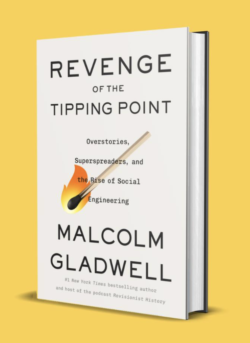MALCOLM GLADWELL’s Revenge of the Tipping Point begins with three puzzles: How did Los Angeles in the 1990s become, as the author puts it, “the bank-robbery capital of the world”? Why did a respectable nursing-home operator from Chicago turn into one of the greatest fraudsters in Medicare history after he moved to Miami? Why did teenagers in an idyllic community start killing themselves—and were their parents somehow responsible? To which I might add a fourth puzzle: How does Mr. Gladwell tie all this together into anything resembling a coherent whole?

REVENGE OF THE TIPPING POINT: Overstories, Superspreaders, and the Rise of Social Engineering, by Malcolm Gladwell. Little, Brown & Co., 368 pages

 October 11, 2024
October 11, 2024




